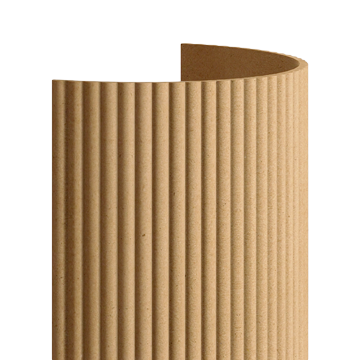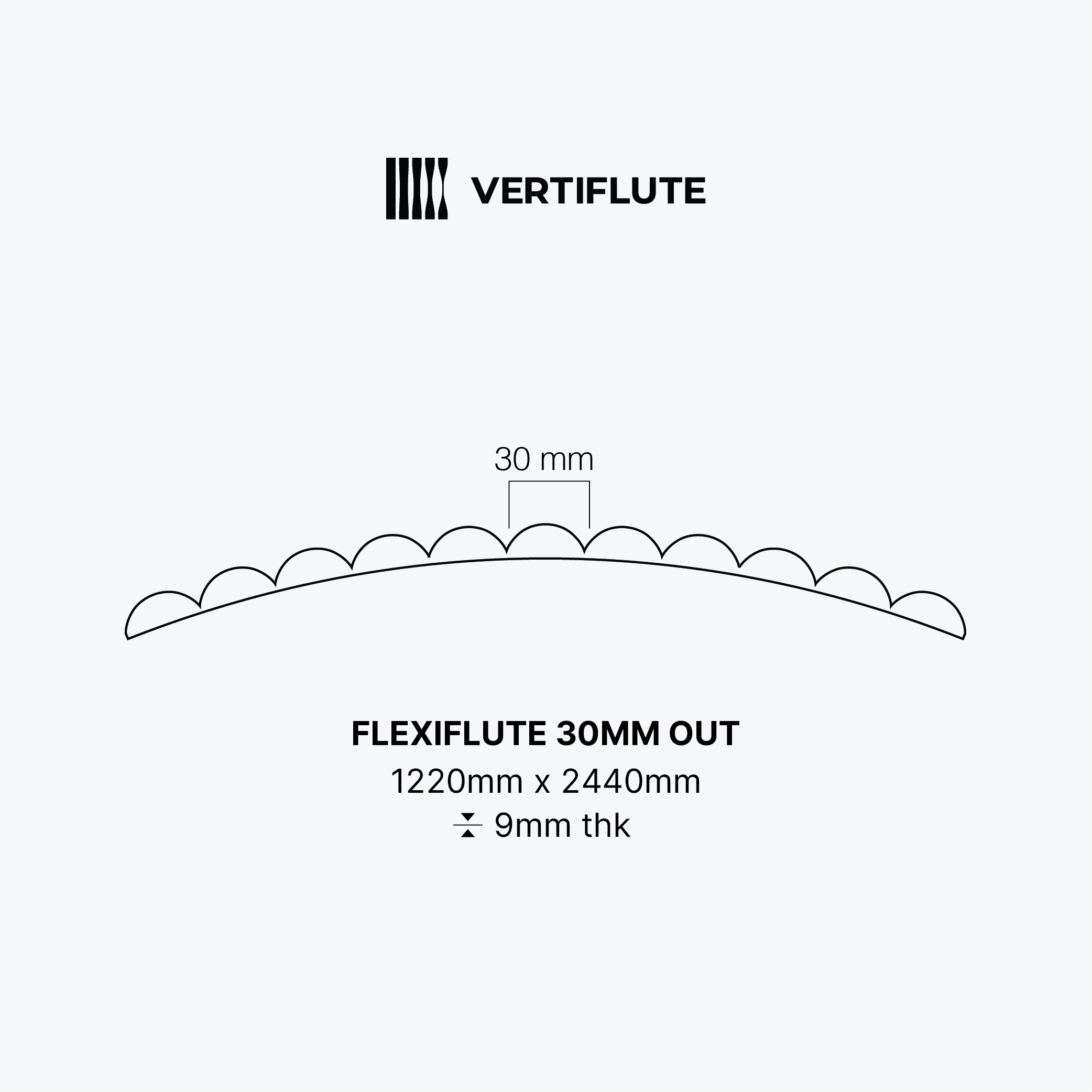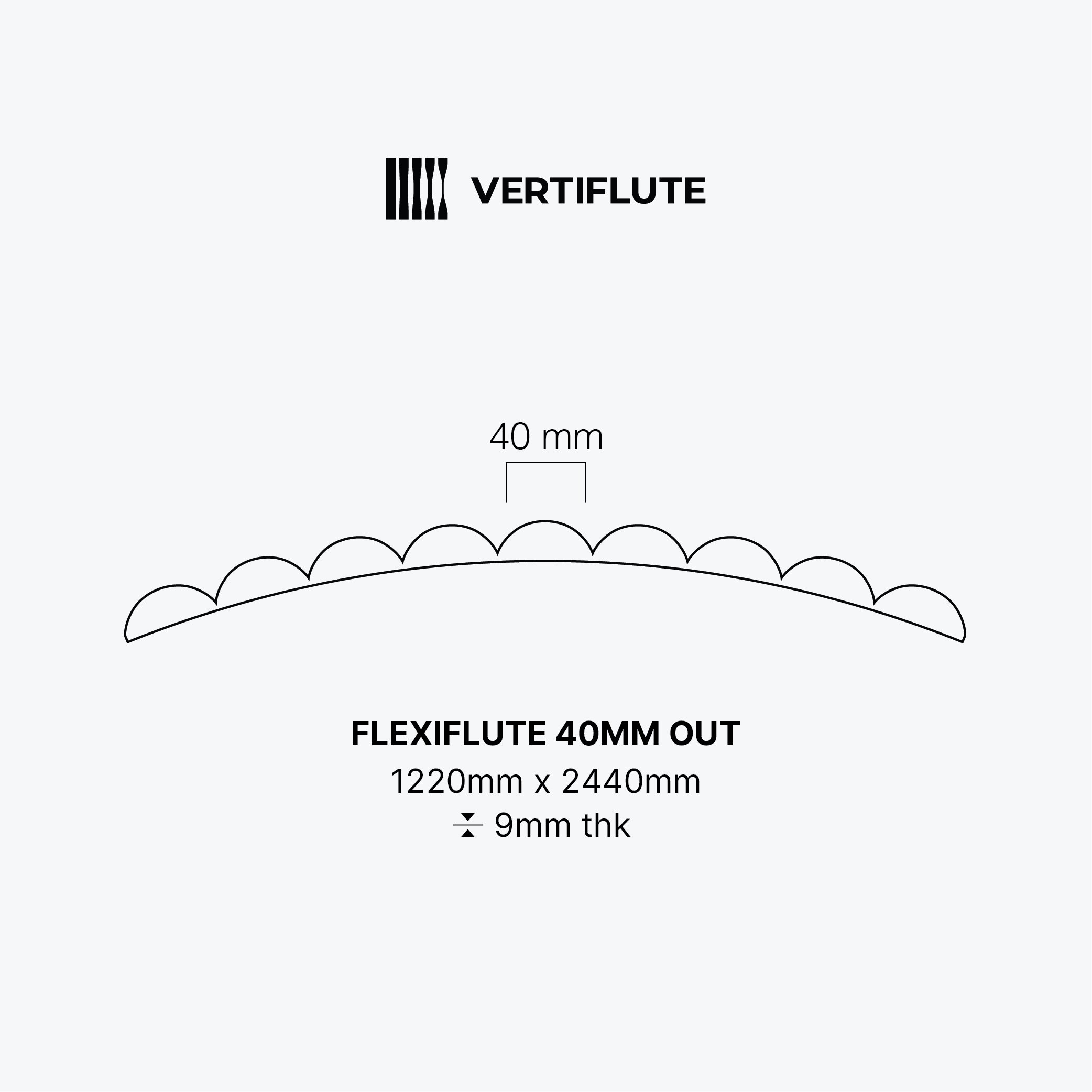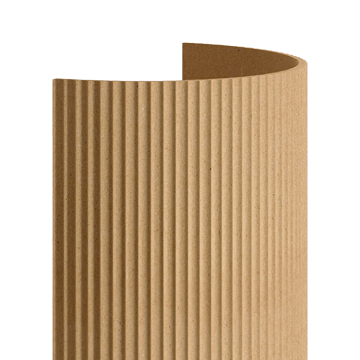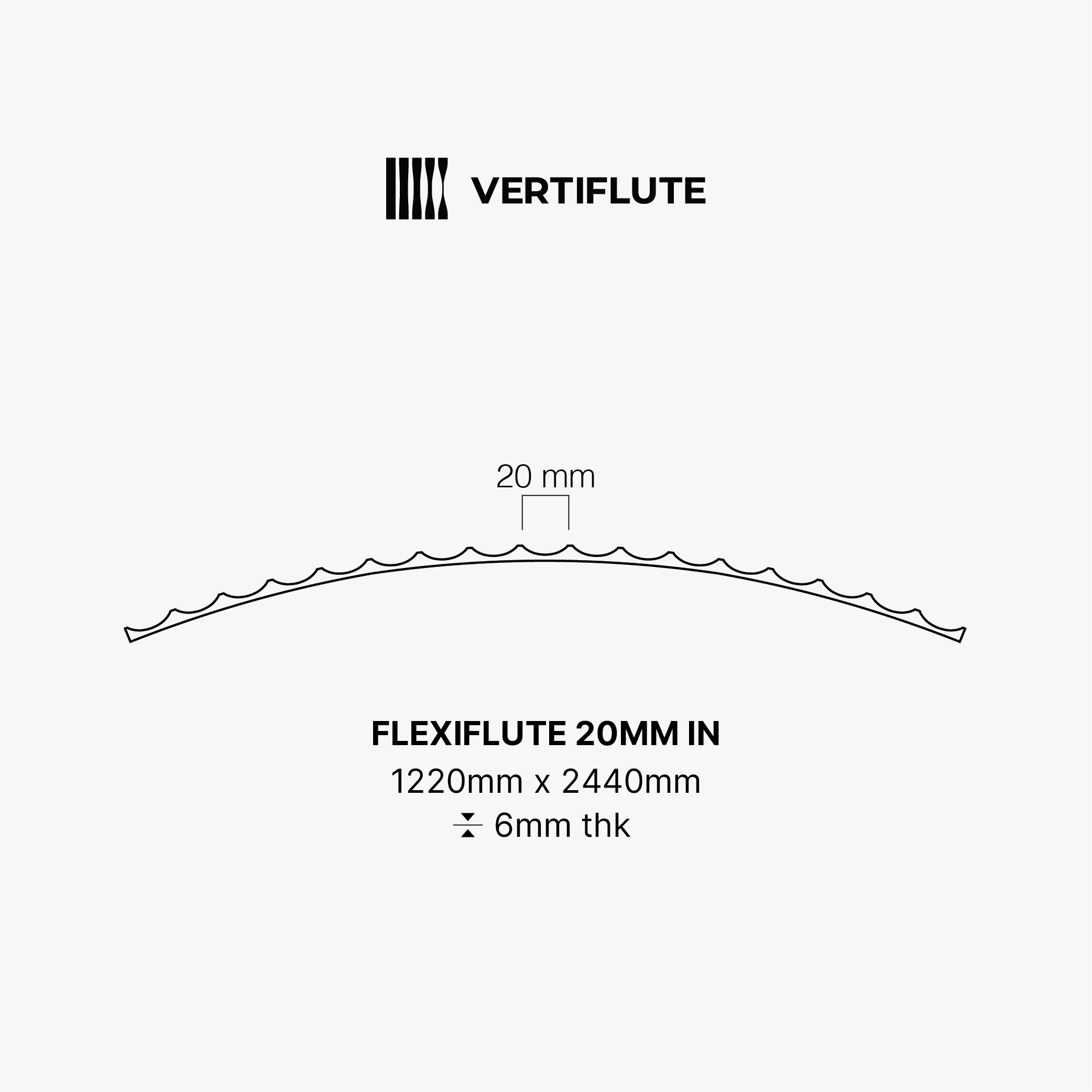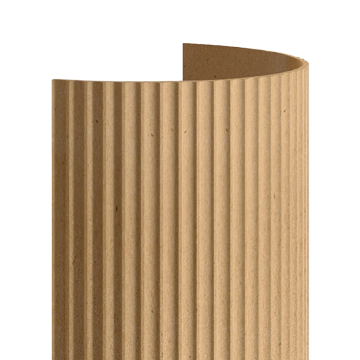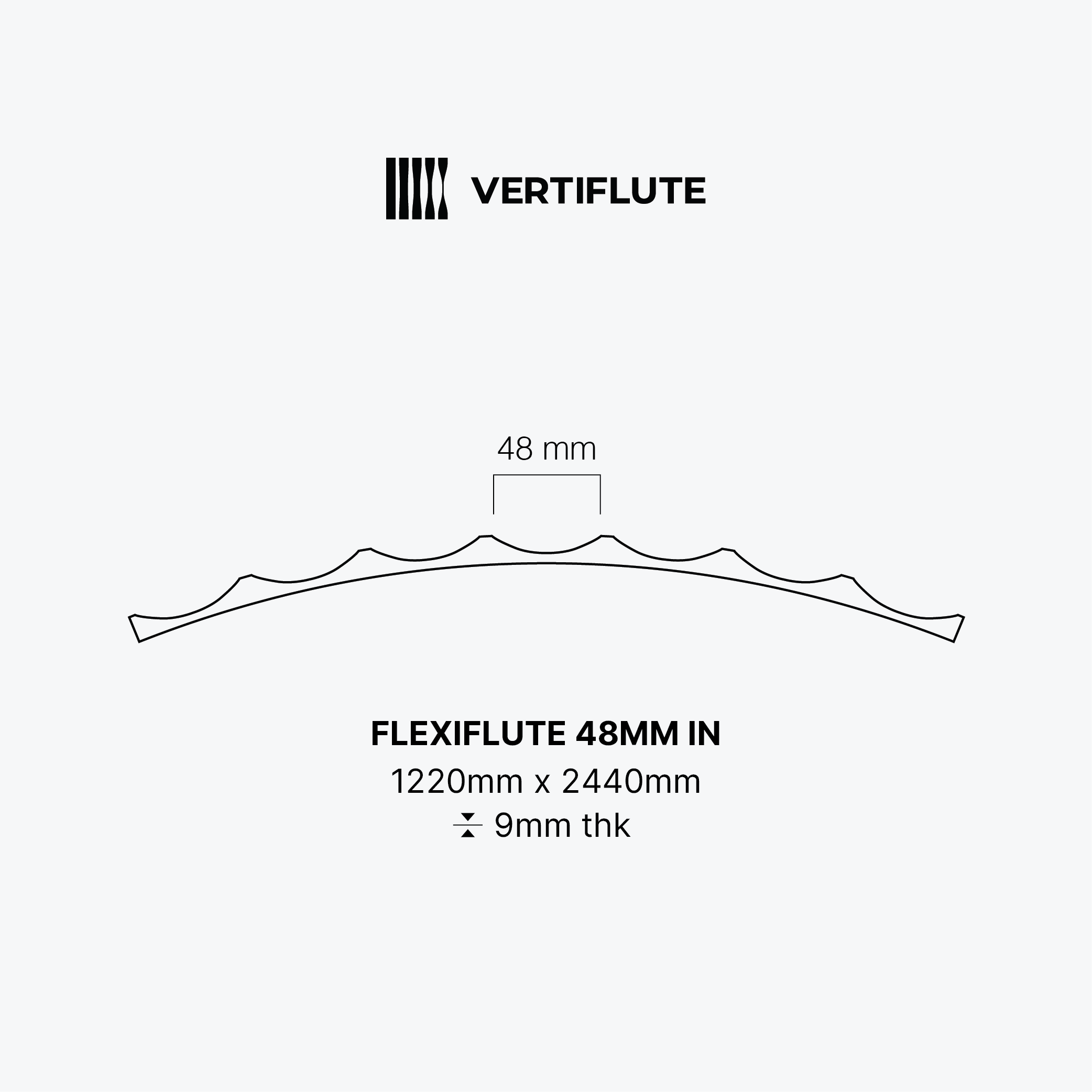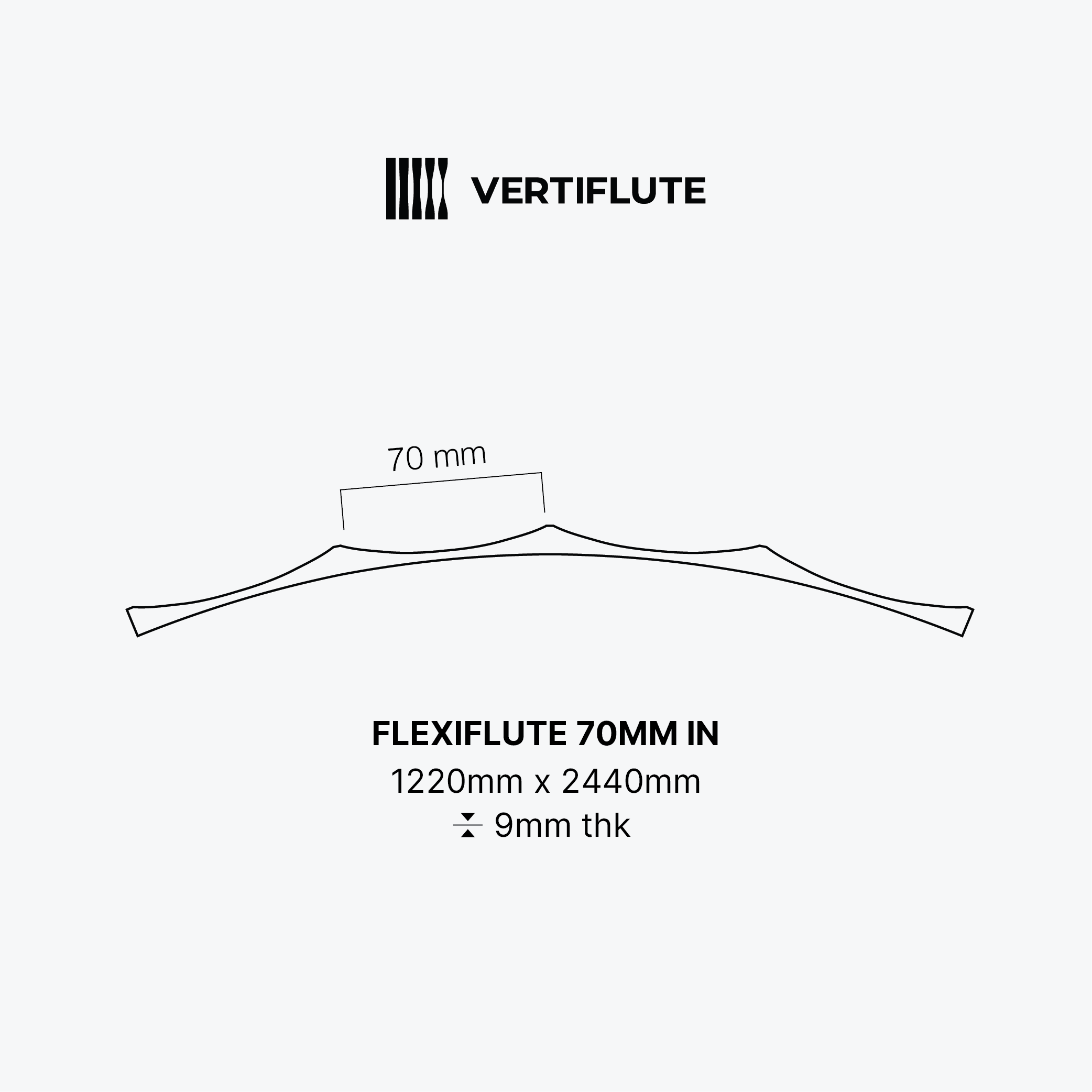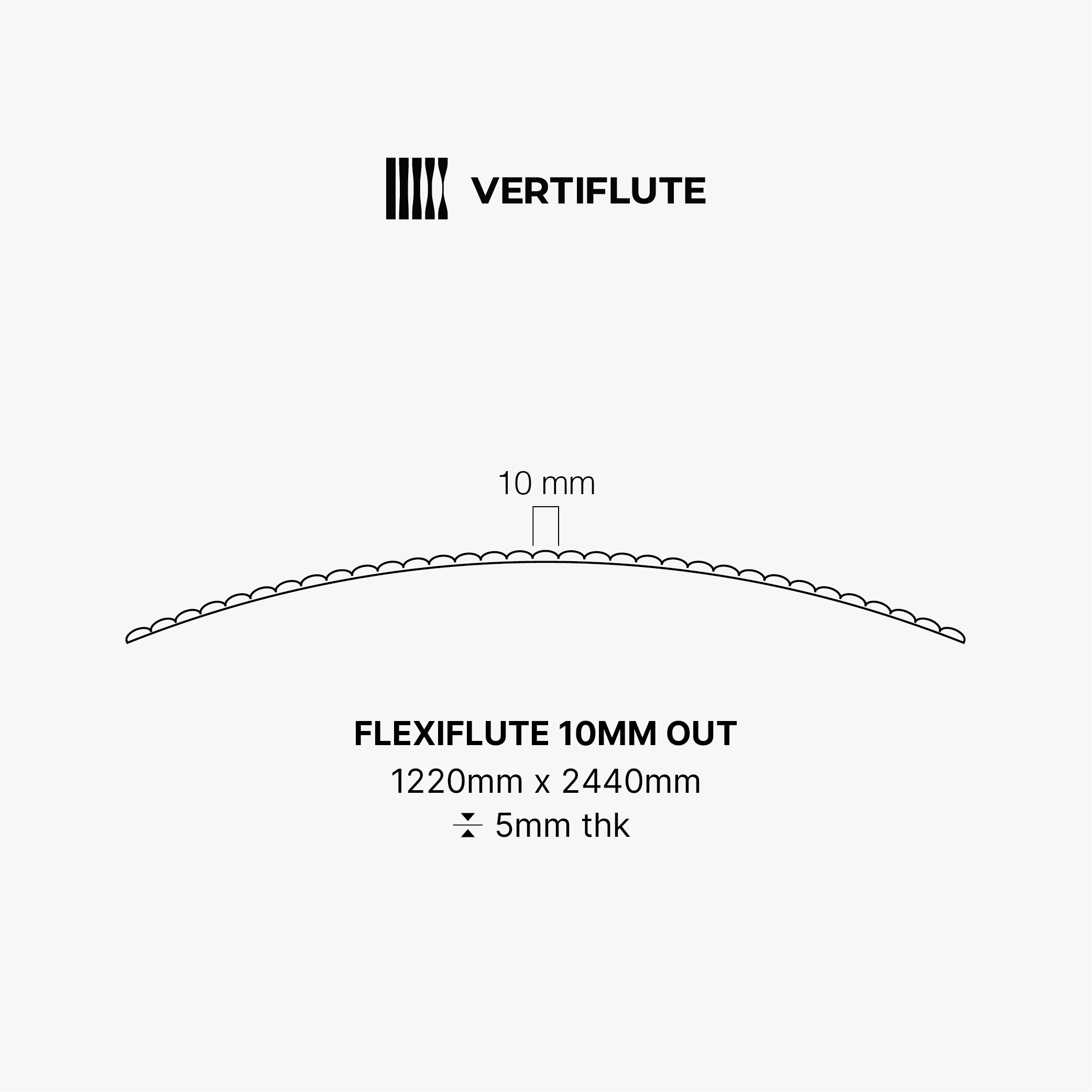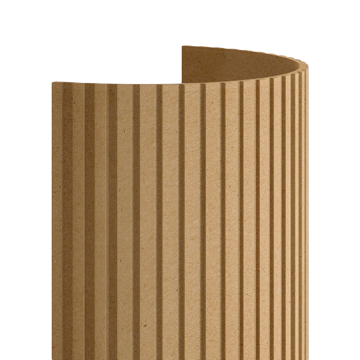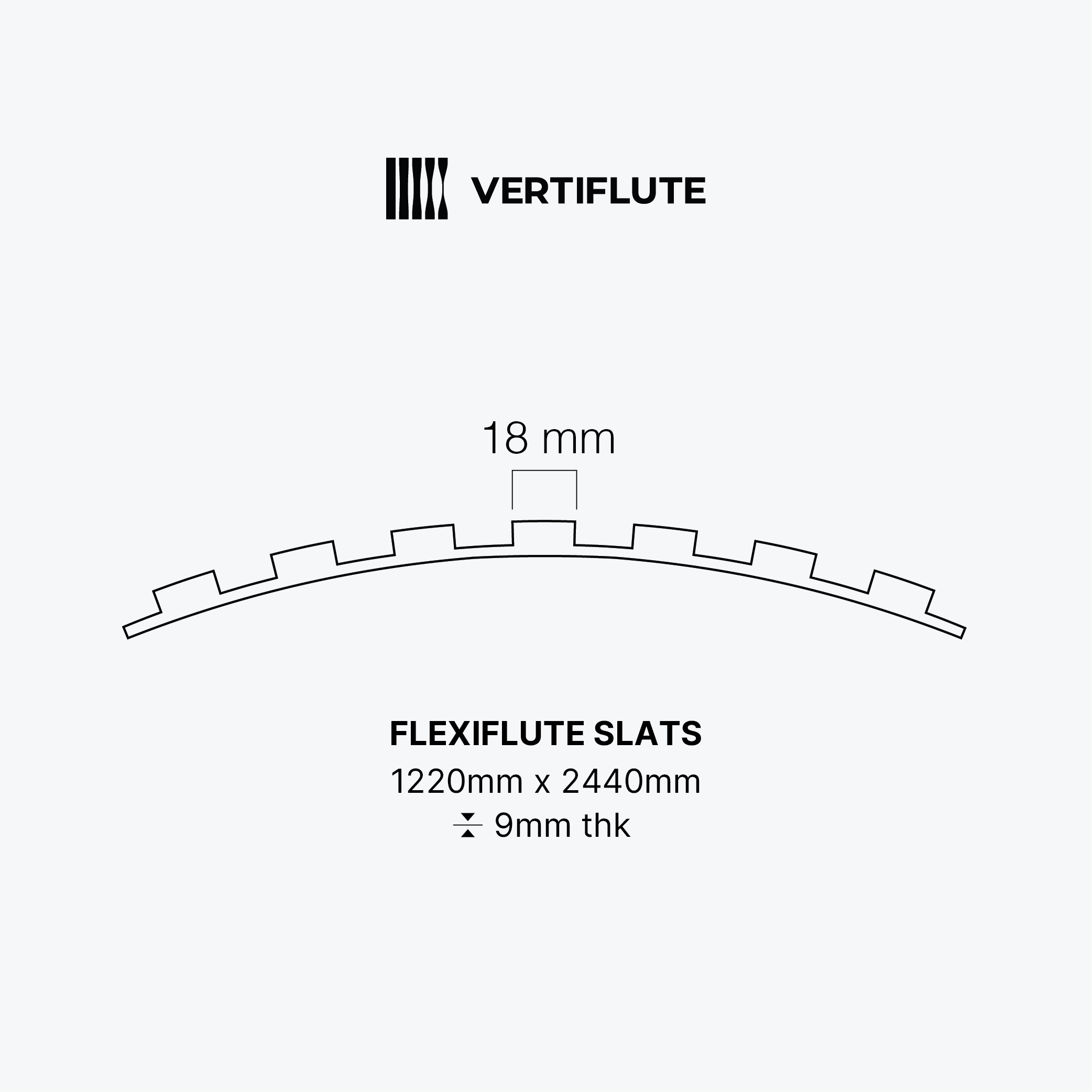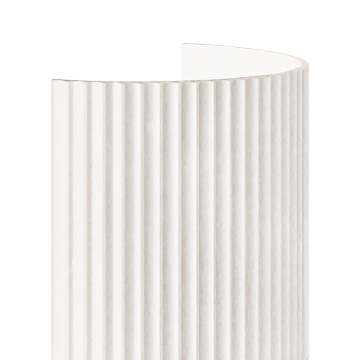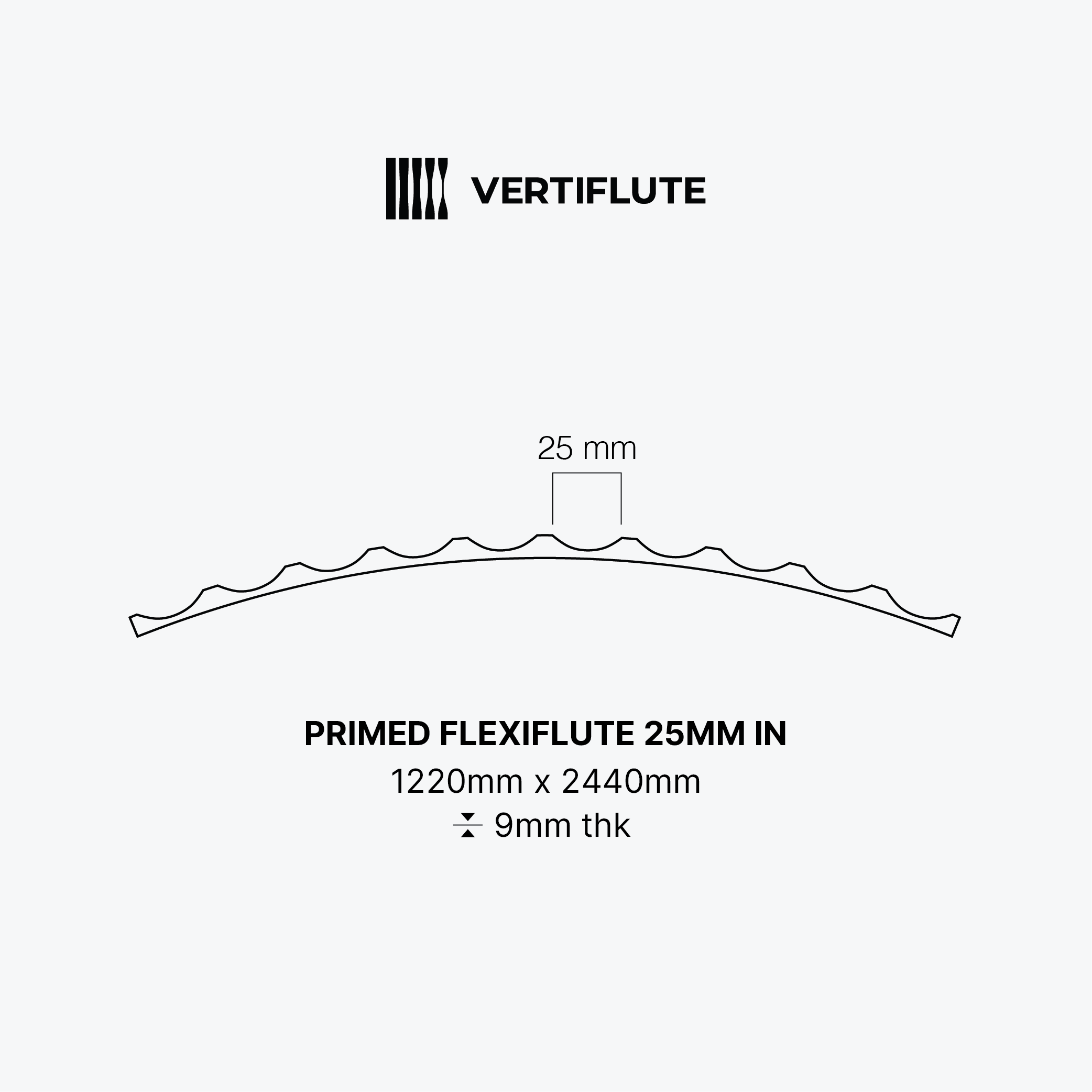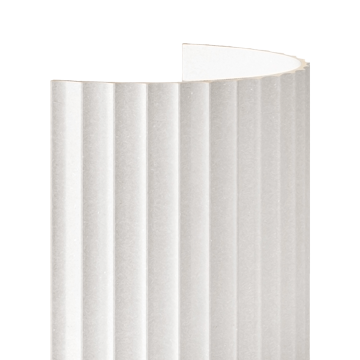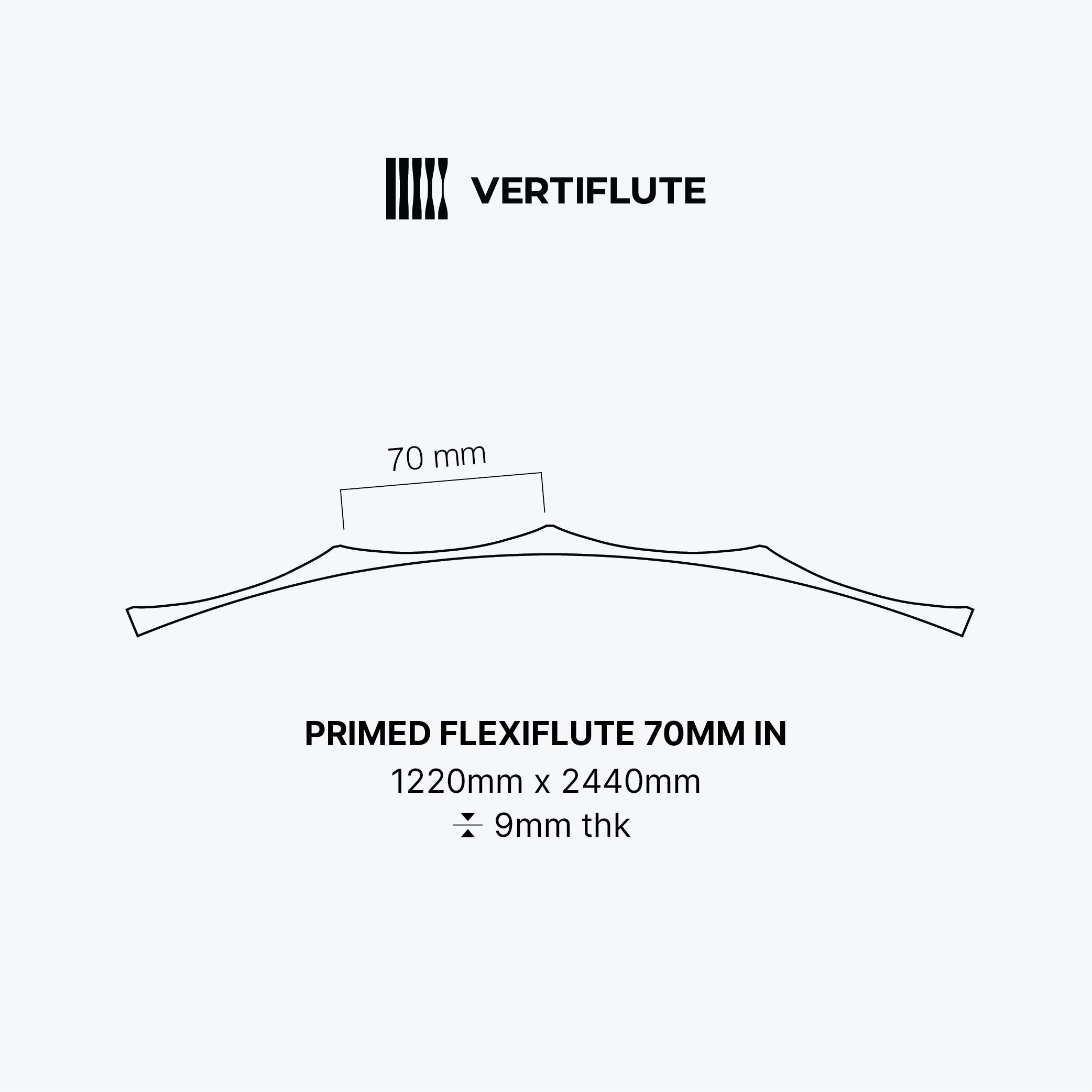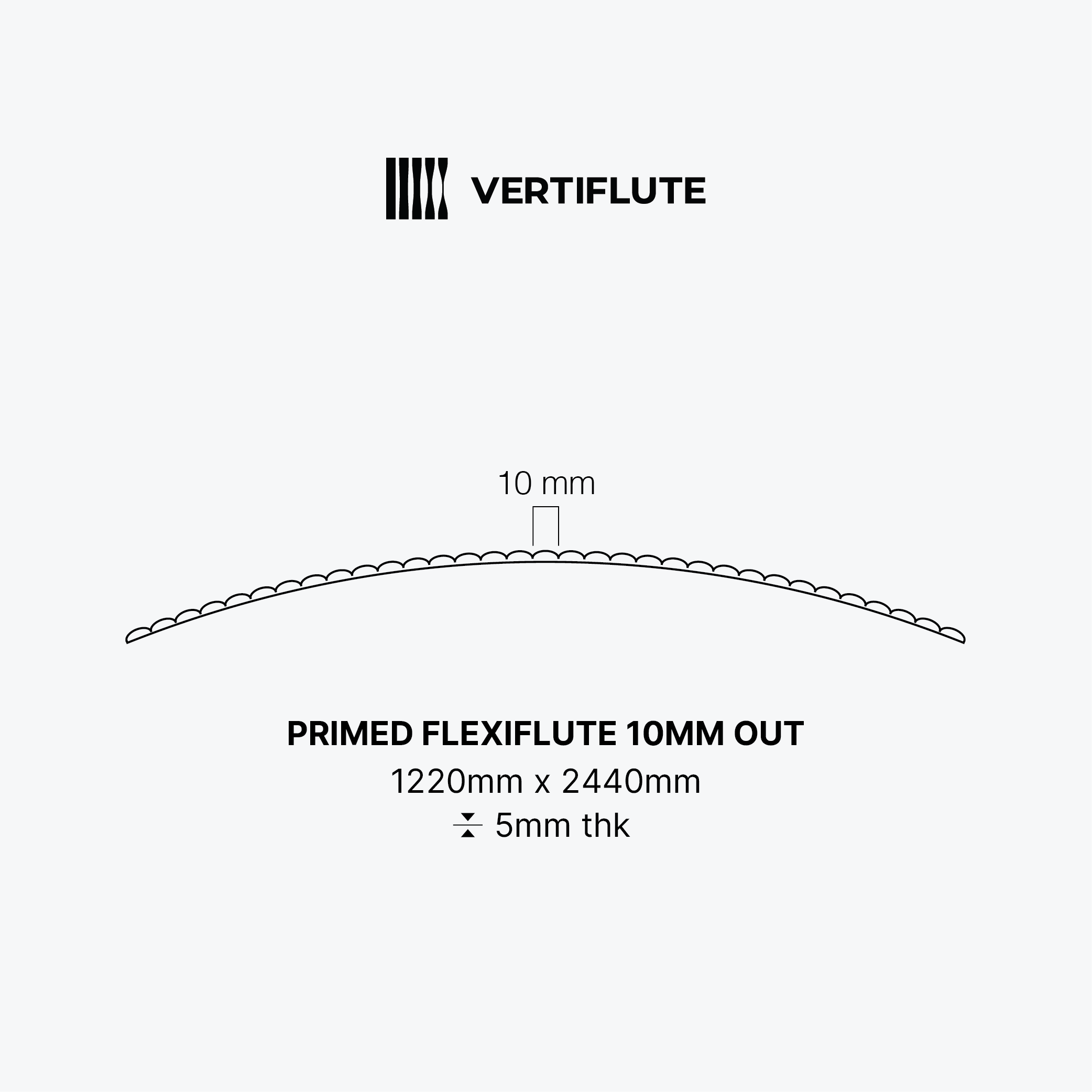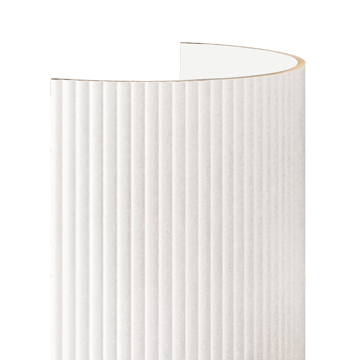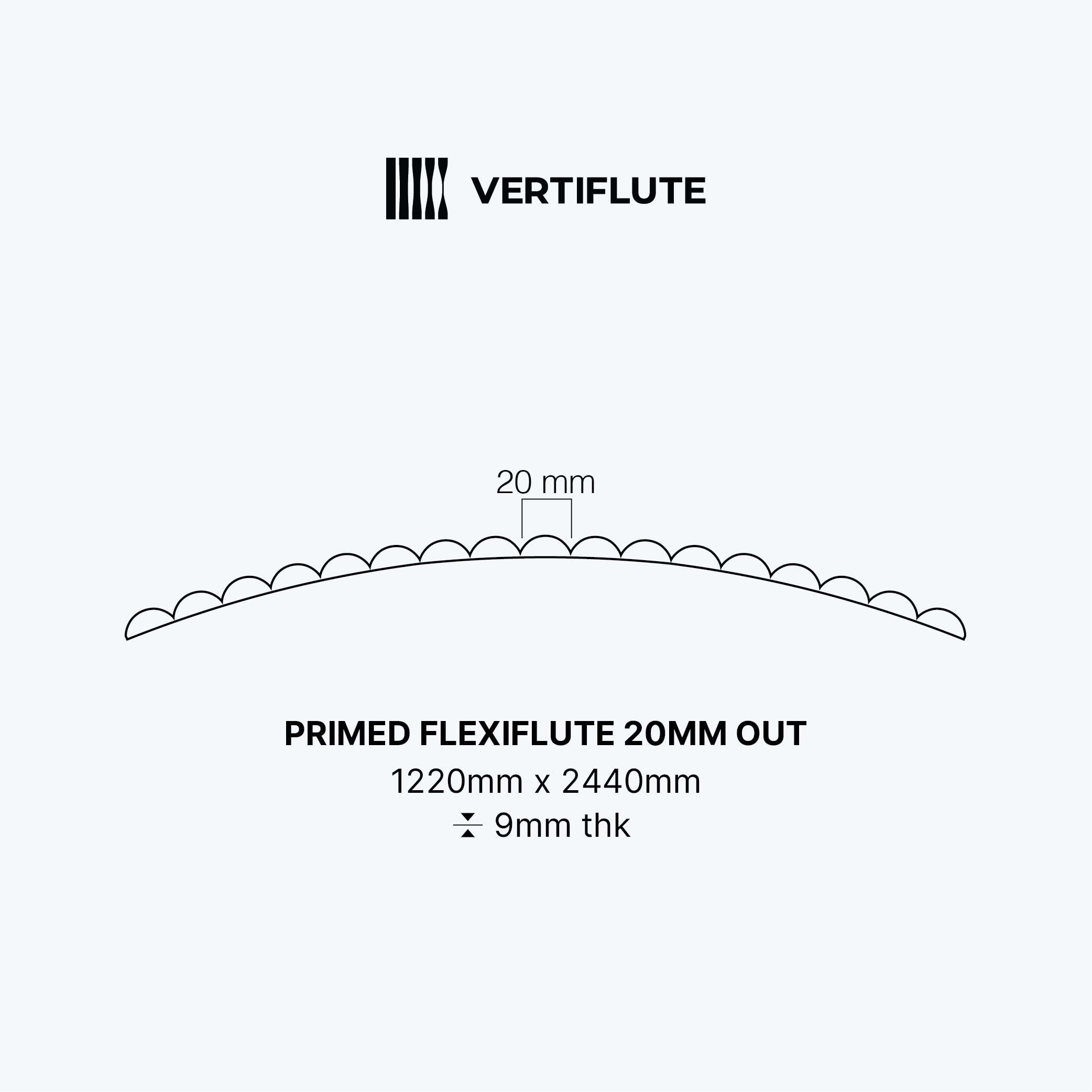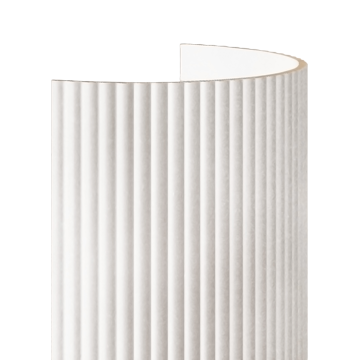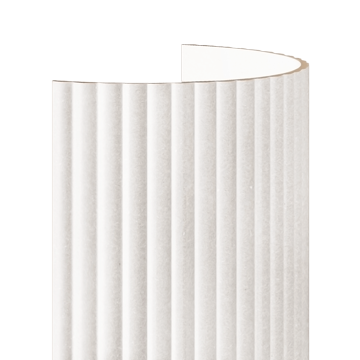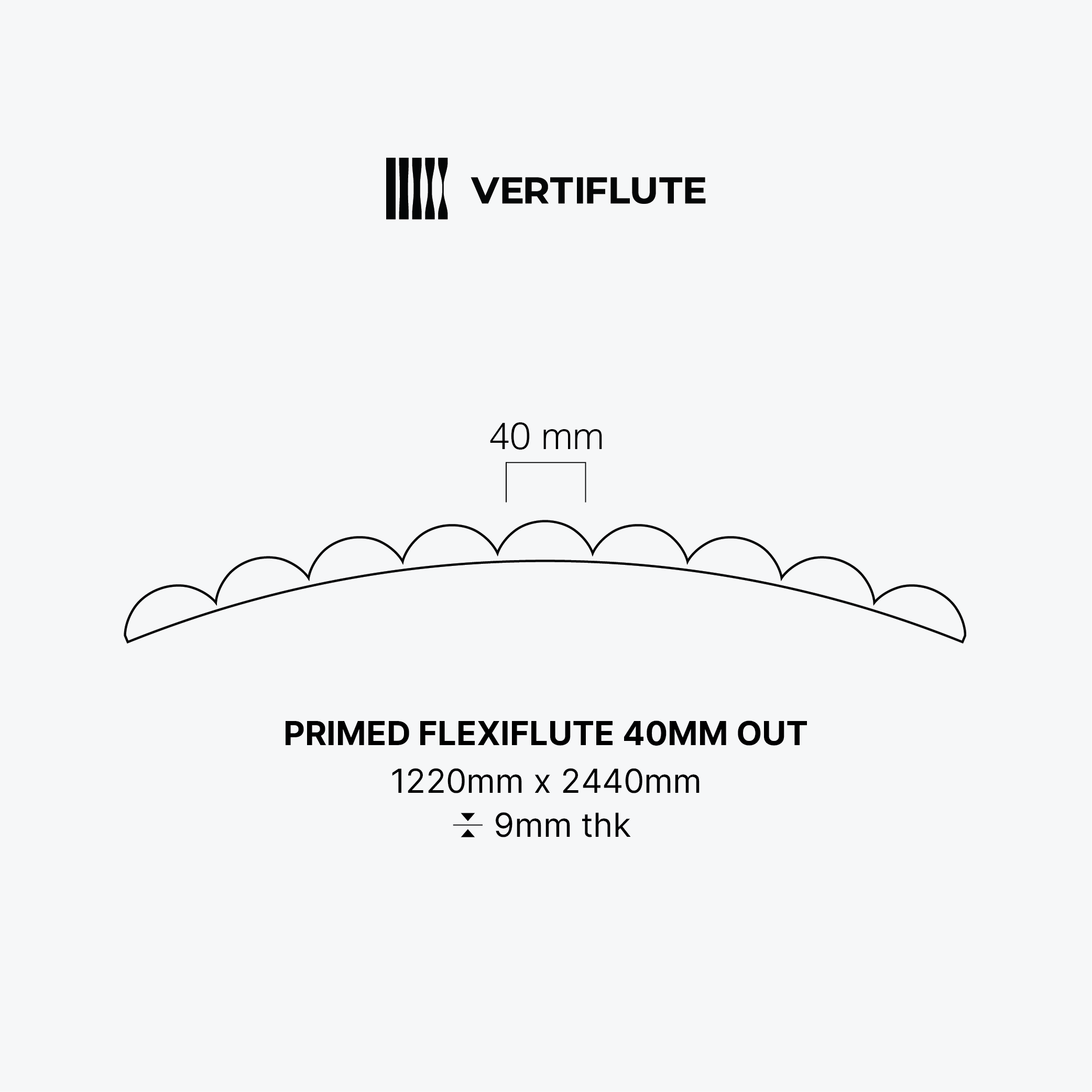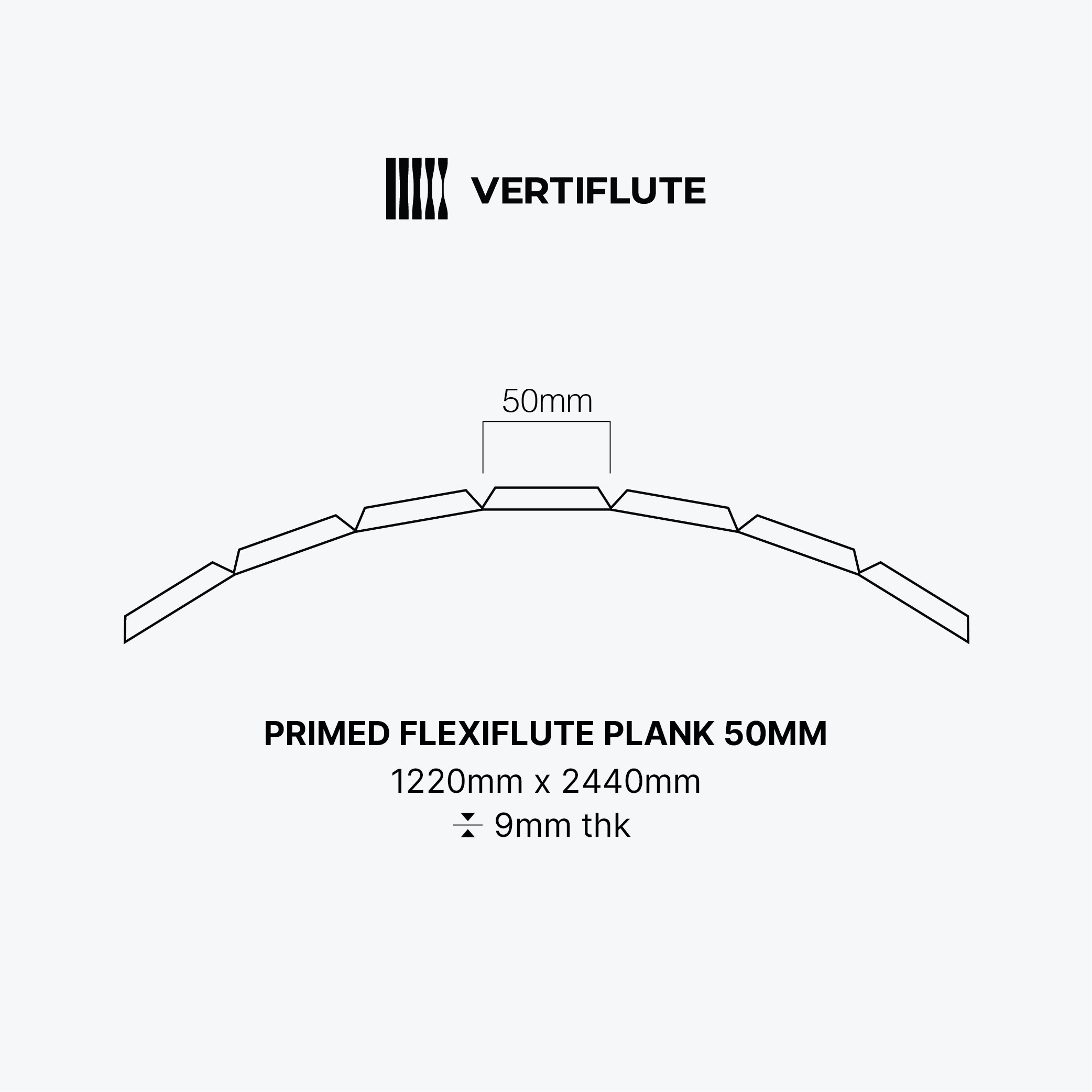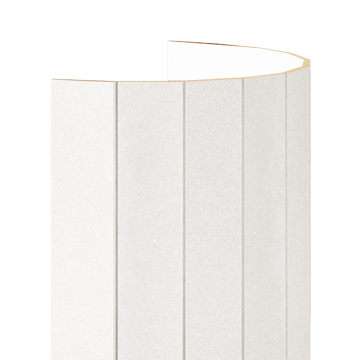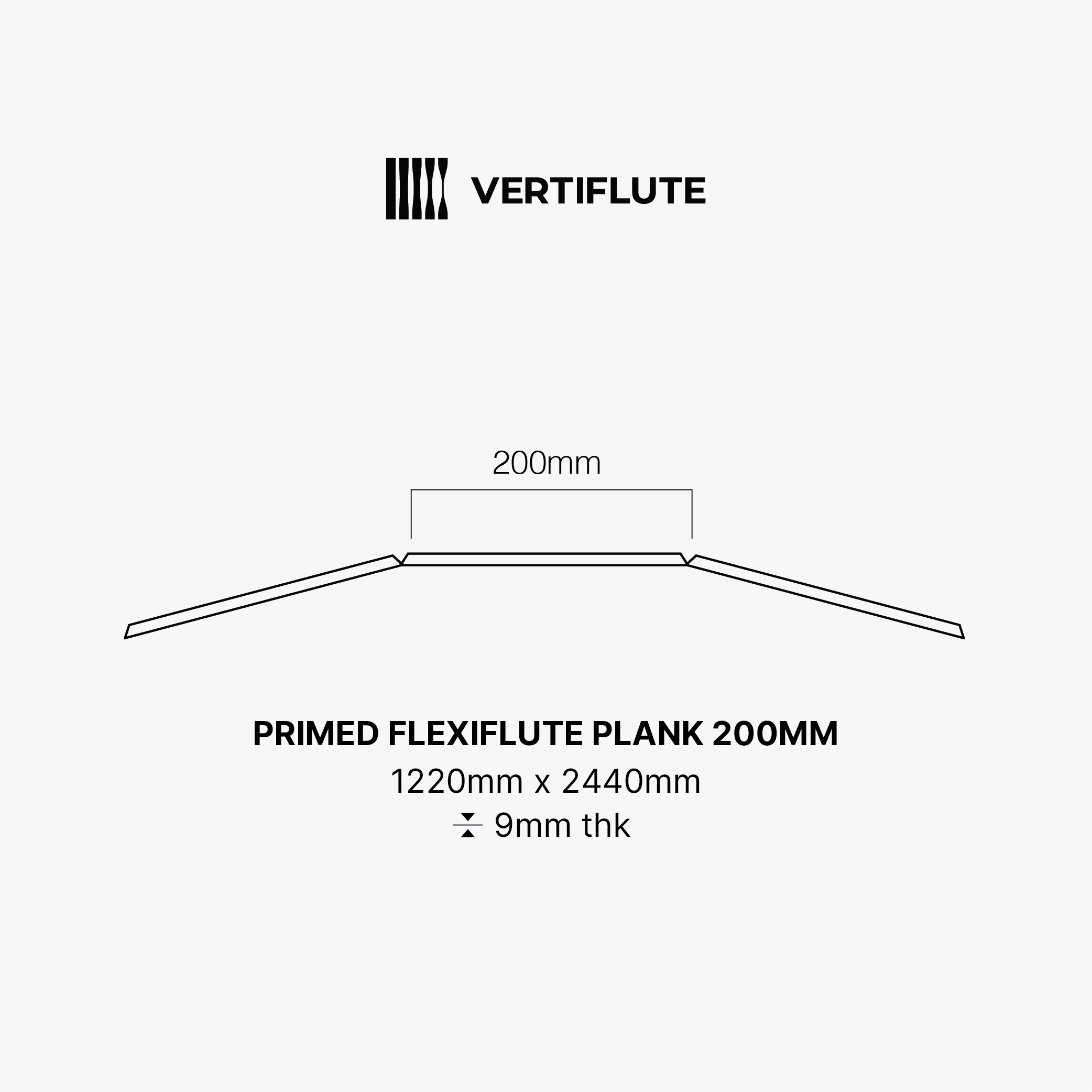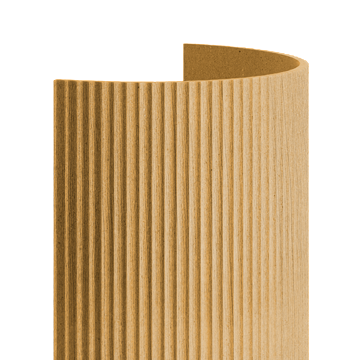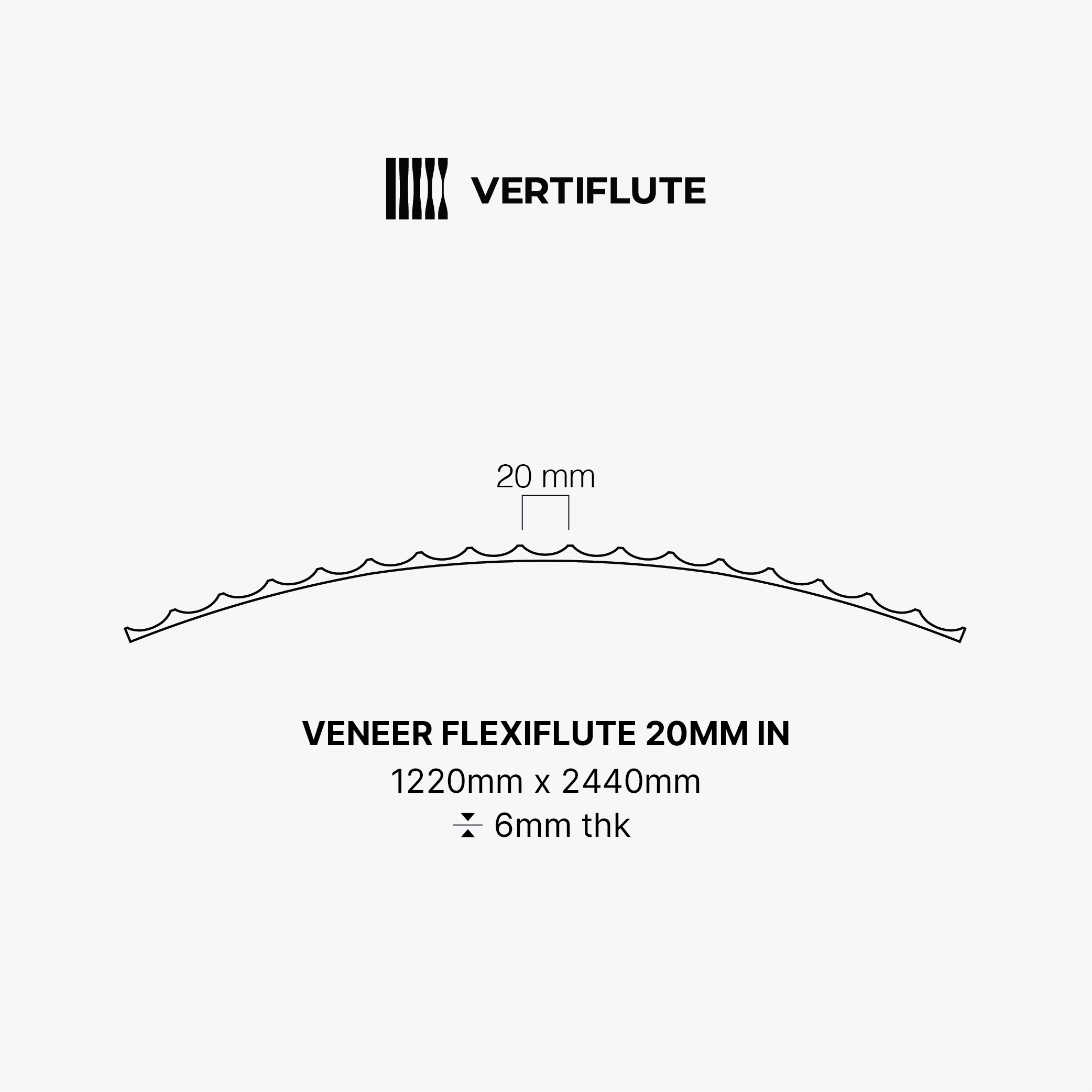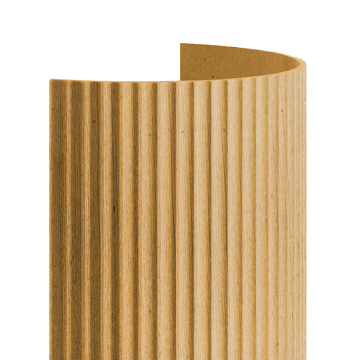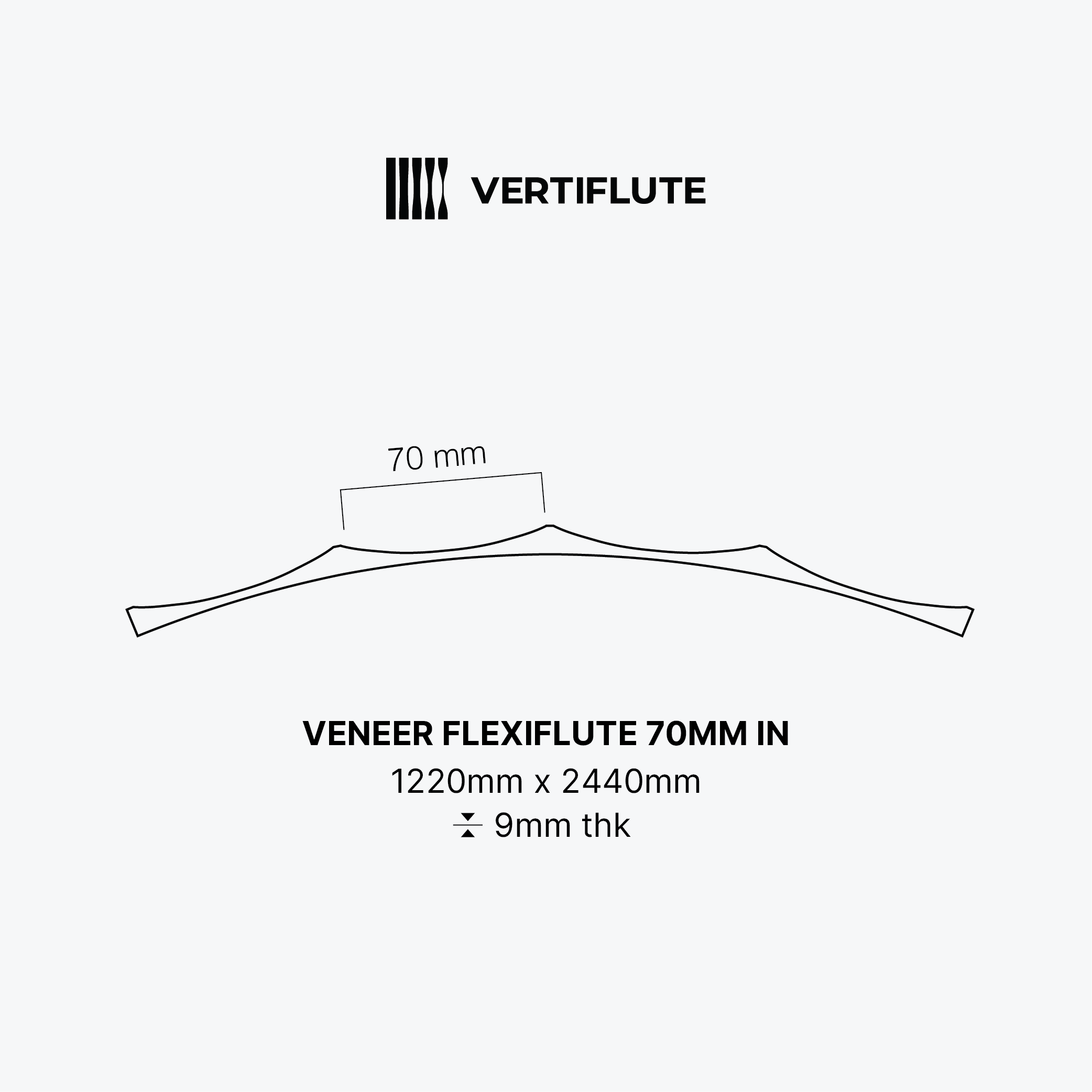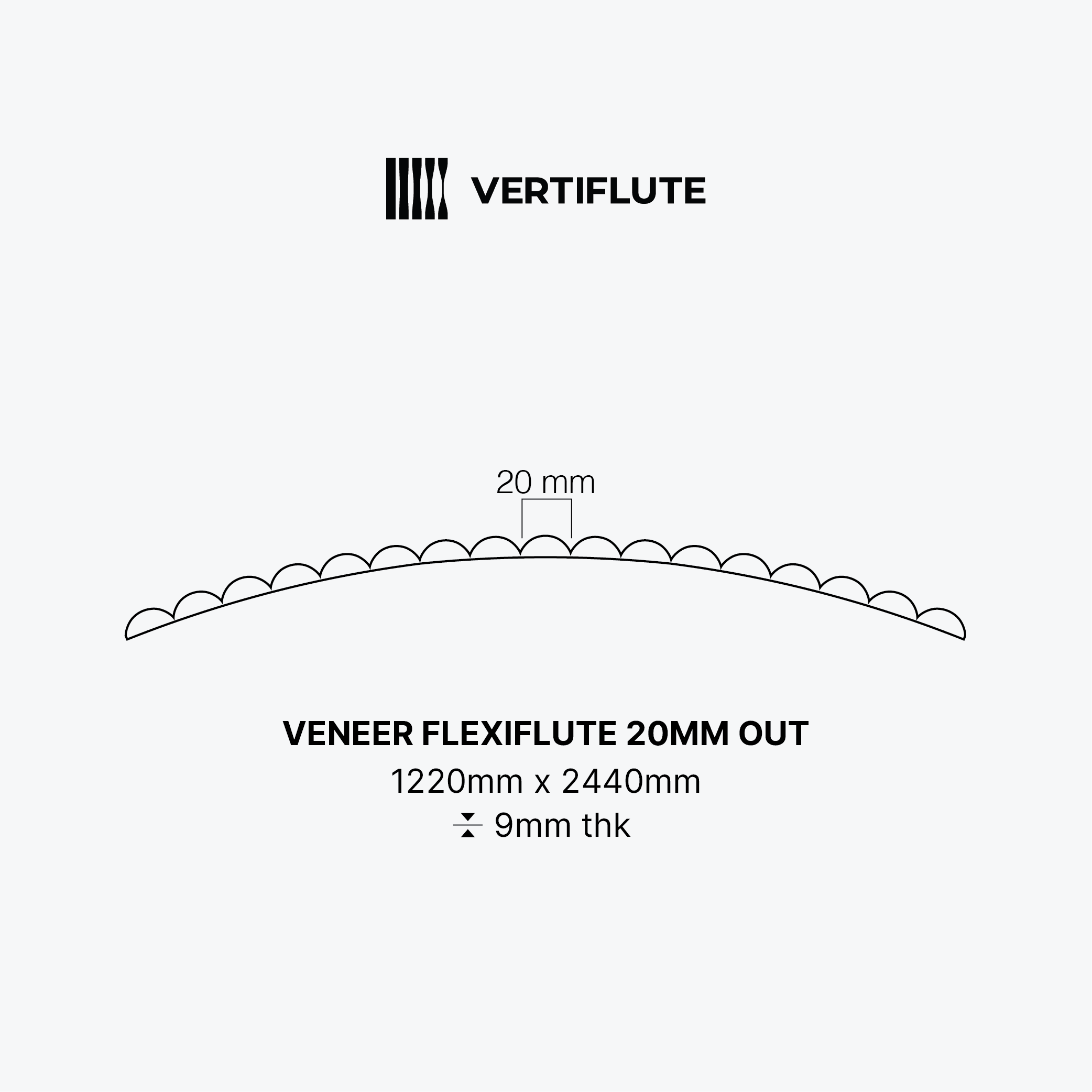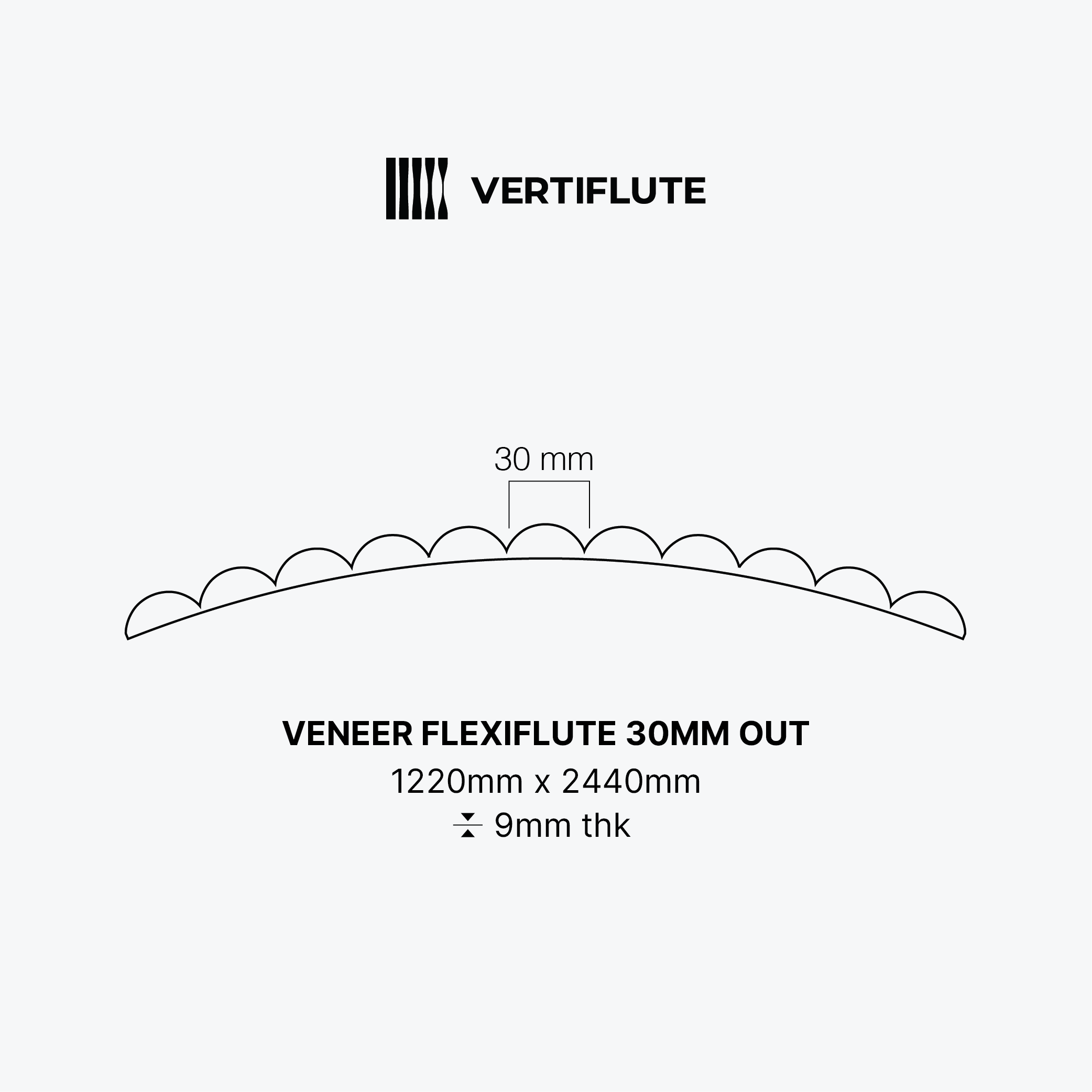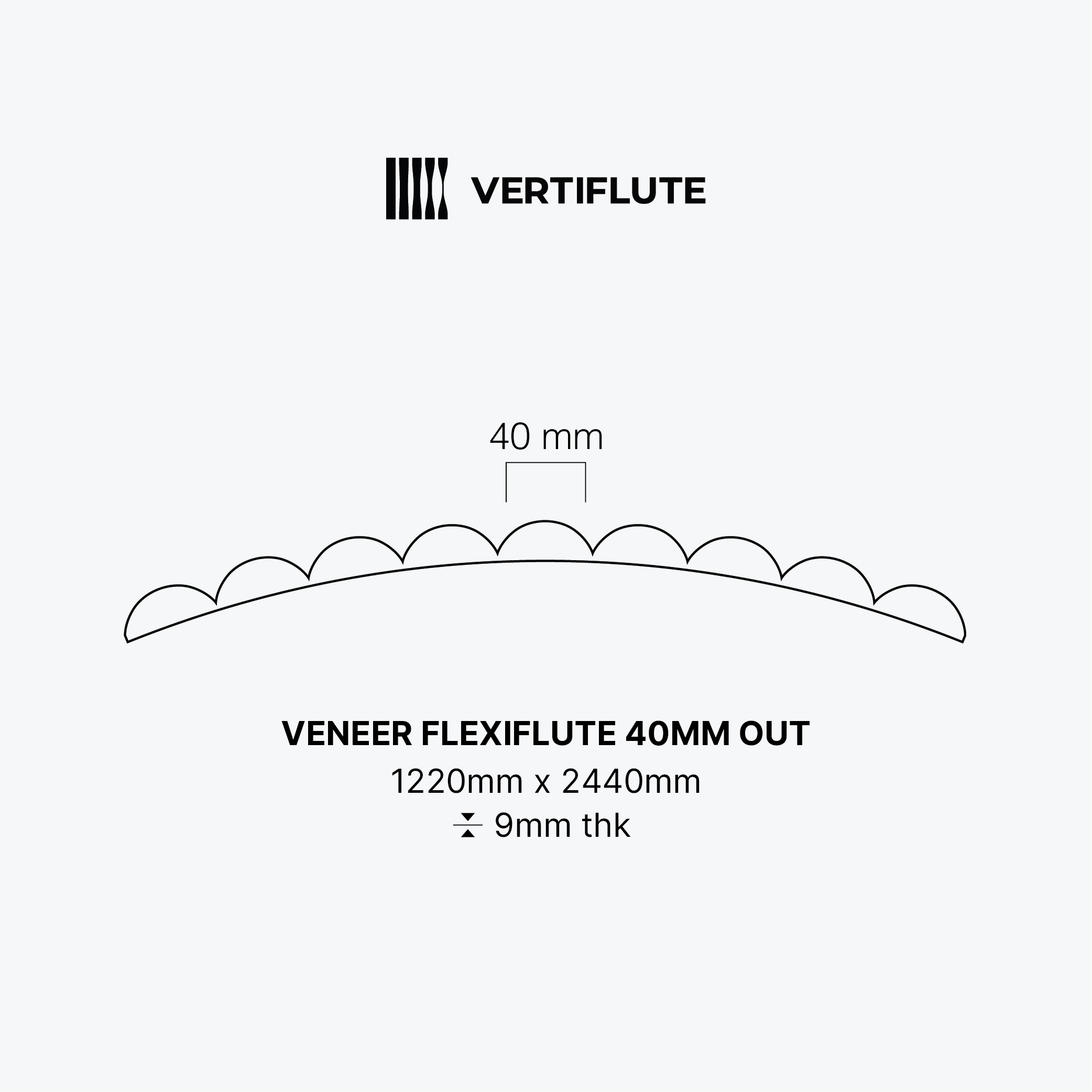Flexible options — Made for you.
Flexiflute MDF
-
The Flexiflute Series offers exceptional versatility, easily bending, curving, or shaping to fit diverse surfaces and contours. This flexibility enables innovative design possibilities and ensures seamless coverage of curved or irregular surfaces.
-
Size 1220mm x 2440mm
Material MDF
Finish Natural (Ready to Paint)
Standard Grade E1 / CARB P2
Flexiflute Primed
-
The Primed MDF Flexiflute Series offers flexible fluted panels with a coat of water-based primer, eliminating all the surface preparation, and conveniently jump straight to painting.
-
Size 1220mm x 2440mm
Material MDF with water-based primer
Finish Primed MDF
Standard Grade E1 / CARB P2
Flexiflute Veneer
-
The Veneer MDF Flexiflute Series offers flexible fluted panels enhanced by a layer of red oak veneer that can be bleached, stained, or varnished to your preferred finish.
-
Size 1220mm x 2440mm
Material MDF with Red Oak Veneer
Finish Veneer with MDF
Standard Grade E1 / CARB P2

FAQs
Flexi MDF & Flexi Primed MDF
-
MDF is not recommended for outdoor use as it is highly sensitive to moisture and humidity. Prolonged exposure can lead to swelling, warping, and surface degradation.
-
Standard MDF is not water-resistant and should not be installed in wet or damp areas. Moisture can compromise its structural integrity over time. However, proper sealing, finishing, and painting can offer some level of surface protection against occasional moisture.
-
MDF is not inherently termite-resistant since it is made from wood fibers. For termite-prone areas, additional chemical treatment or protective coatings are advised.
-
MDF can be painted in any desired color using either water-based or oil-based paints.
-
Gaps, joints, and edges should be filled with wall putty or wood filler for a seamless finish. Edge trims may also be added for durability and aesthetics.
FAQs
MDF Veneer
-
MDF Veneer is strictly for indoor applications as it lacks protection against weather and moisture.
-
MDF Veneer is not naturally termite-proof and can be vulnerable in untreated environments. Protective coatings or pre-treated boards are recommended for added safety.
-
Sand the surface gently, then apply a clear coat, wood sealer, or varnish to protect the veneer and enhance its appearance. For a darker shade, use a wood stain; for lighter tones, apply a wood bleach before sealing.
-
There is no specific required brand, but using high-quality, wood-compatible adhesives, sealants, and finishes ensures better durability and bonding. Professional-grade products are highly recommended.
-
Use a fine-tooth circular saw or table saw with proper support to avoid splintering the veneer layer. For clean edges, scoring the veneer before cutting can also help reduce chipping.




